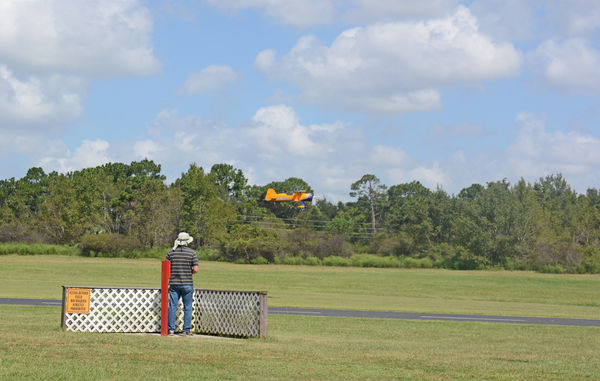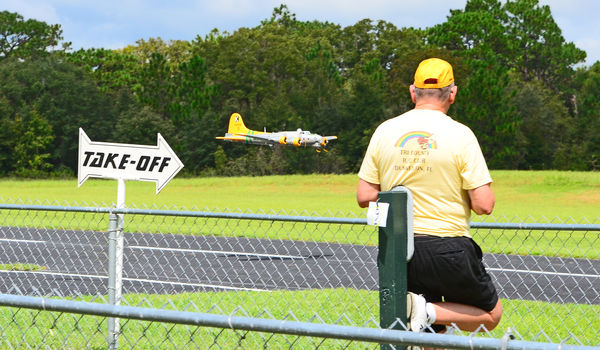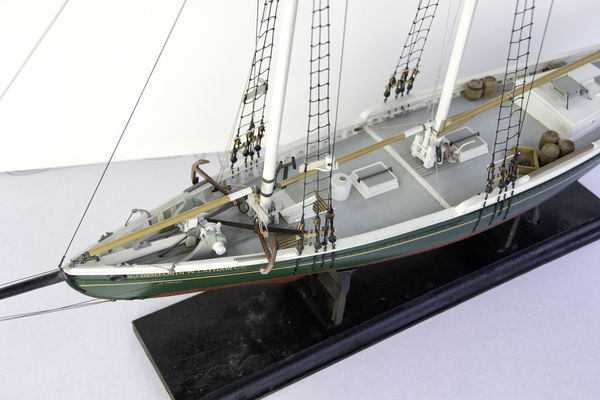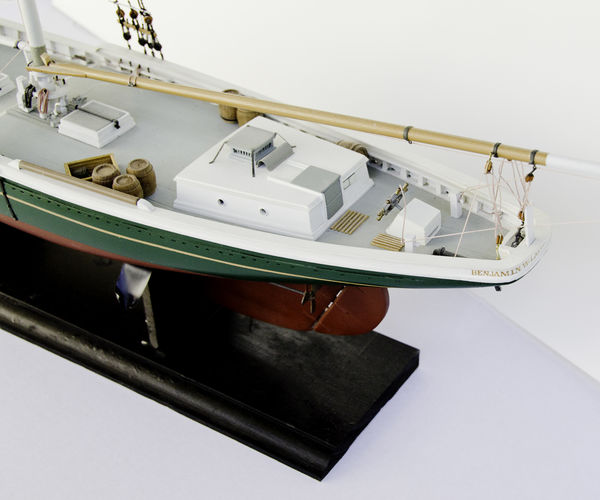Novice question
Oct 10, 2016 12:48:55 #
It depends a bit on what camera you have, but many have a mode (Pentax calls it "catch in focus") where the shutter will automatically fire when it is in focus. You might try that---use manual focus mode and pre-focus on a spot the plane is going to fly through, then let the camera fire on its own when it thinks it has focus.
Also, use a faster shutter speed than you probably think you need to freeze the motion of the plane. If you have enough light to use 1/1000 or 1/2000 or above, try that. A little trial and error may be needed here.
Also, use a faster shutter speed than you probably think you need to freeze the motion of the plane. If you have enough light to use 1/1000 or 1/2000 or above, try that. A little trial and error may be needed here.
Oct 17, 2016 08:09:35 #
Pablo8 wrote:
***********************************************************************
I always advocate that " A larger aperture will give you a more shallow depth of field" It has worked for me since 1959, and my 40 plus years as a Pro' Photographer. Misinformation does not help anyone, especially a 'Novice'.
I always advocate that " A larger aperture will give you a more shallow depth of field" It has worked for me since 1959, and my 40 plus years as a Pro' Photographer. Misinformation does not help anyone, especially a 'Novice'.
Must have just been a BRAIN-FART on jerrys' part. As long as he's been around..... almost everyone would acknowledge that "larger aperture means SHALLOWER depth of field.And I'm sure he knew that. Slip of the tongue(typing finger). RJM
Oct 17, 2016 08:13:05 #
Leitz wrote:
We should all accept correction so gracefully! 

True that. But I've never seen Jerry anything BUT graceful and dignified. RJM
Oct 17, 2016 08:17:40 #
Pablo8 wrote:
**************************************************... (show quote)
You were certainly RIGHT to make the correction, for the sake of the op's clear thinking. And you didn't come off "too HARSH". Jerry is a very well known and wise, sage, insightful guy on the hogg, so it has all come down the way it should. People behaved. RJM
Nov 6, 2016 18:16:39 #
Techman wrote:
I have been shooting RC aircraft for 20+ years wit... (show quote)
Great model pics... I'm a "photographer" and have been making (love to build) r/c models for years. My last one was a SIG 1/4 scale Cub with a Saito 4-cycle twin. Easier to fly than a kite! Keep those pics coming! Carl P.S.,,, I also build museum scale ships---see attachment.
Nov 6, 2016 18:19:48 #
cheineck wrote:
Great model pics... I'm a "photographer" and have been making (love to build) r/c models for years. My last one was a SIG 1/4 scale Cub with a Saito 4-cycle twin. Easier to fly than a kite! Keep those pics coming! Carl P.S.,,, I also build museum scale ships---see attachment.
Damn, I hope I didn't "hijack" your post! Sorry If it looks like that. I just really like model builders!!!!!
Nov 11, 2016 22:30:11 #
NotAnselAdams wrote:
I am an amateur picture taker. You'll notice I do... (show quote)
Without getting too specific, try to get the highest shutter speed you can given the light conditions. Try to pan when you're shooting. In other words, follow the aircraft with the camera and press the shutter while panning. It takes practice but you can get pretty sharp images that keep the plane in focus while making the background blurry which gives the feeling of movement. I'm sure others who know the terminology better can make it clearer.
Nov 14, 2016 22:10:44 #
NotAnselAdams wrote:
I am an amateur picture taker. You'll notice I do... (show quote)
Hi NotAnselAdams,
Faster shutter speed is your most valued friend when shooting moving objects: how fast depends on the moving object itself. To shoot fast you will find that your aperture will be wide open, lower F/stop number, thus more light coming in. The apertur won't be as important as getting the object sharply focused but does factor into how much of the image will be in focus. Set your camera (using shutter priority) for the shutter speed you want, you might start at a shutter speed of 1000 or so, and see what aperture you get. Set your ISO at 400. Take a test shot and see what you get. If you can move the shutter speed to a faster speed, as evidenced by your test shot exposure, then do so. If you need that faster speed but cannot open up the aperture any more then increase your ISO: I would not take your aperture down too low (number, as in f/4), again depending on the image size. It's a dance of sorts with the three controls. In general, an aperture of f/8 will keep most of your image sharp. Having said that, it depends on the size of your image, the planes (not airplanes but planes of focus) in your image, and your focus point. For birds I like to go no wider than f/5.6 as that seems to keep the majority of the image in focus. For airplanes I most often try to keep it around f/8. I'm not at home so cannot include examples but I've shot moving aircraft and many types of animals in motion. You need to steady yourself using your elbows and follow along with the moving object: shoot multiple shots. Move in a smooth steadied manner with the object. This takes practice. I would also recommend you get a longer lens if that is possible: you can rent lenses via the internet (one place is Borrowlenses.com) and mail delivery. It's a good way to try out a lens. Good luck and have fun learning.
Dec 16, 2016 20:45:57 #
NotAnselAdams wrote:
I am an amateur picture taker. You'll notice I do... (show quote)
Photographing RC aircraft really requires a bigger lens than you used. With your lens, take the photos when the plane is as close to you as possible. Ask permission to stand next to the pilots, this will get you closer to the planes in flight. The idea is to get the plane in the viewfinder to be as large as possible. Take note of the examples that were posted. Even if they were enlarged, the image was obviously large enough to survive the enlargement and still remain sharp. Try enlarging your shot and you'll see what I mean. Bottom Line: It's very much like photographing birds. FYI, I use a 200-400 zoom mounted on a tripod; I also use a single point of focus. Don't overlook taking photos of the pilots. I generally ask one to fly as low as possible and make a pass in front so I can get the plane and the pilot in the same photo.


Dec 16, 2016 22:07:25 #
Techman wrote:
I have been shooting RC aircraft for 20+ years wit... (show quote)
The Focke-Wulf looks almost real... Great photo of an absolutely sensational model. Awesome paint job.
If you want to reply, then register here. Registration is free and your account is created instantly, so you can post right away.






